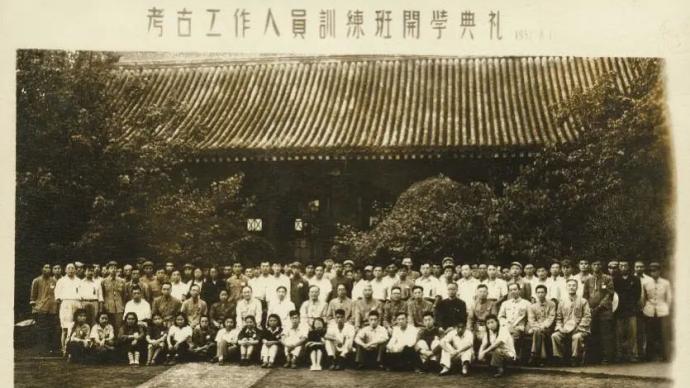
In 1922, when modern archaeology was just introduced to China, Peking University set up an archaeology research room in the Institute of Chinese Studies. It has been a hundred years so far.
In 1952, Peking University established the first archaeology major in Chinese universities, and it has been 70 years since then.
In 1957, Peking University Archaeology began to independently carry out field archaeological teaching practice, closely integrating teaching and scientific research in actual archaeological work, and always regarded it as the top priority of discipline construction. Peking University Archaeology has been awarded 34 items in the selection of "Top Ten New Archaeological Discoveries in China" over the years, and 16 items in the "Hundred Years of Archaeological Discoveries". Focusing on major new archaeological discoveries, Peking University Archaeology has made important contributions to the development of Chinese archaeology and the protection of cultural heritage in terms of discipline construction, personnel training, and scientific research achievements.
For a hundred years, Peking University archaeological masters have gathered: Ma Heng, Xiang Da, Su Bingqi, Su Bai, Zou Heng, Lv Zunzhen, Yan Wenming, Yu Weichao, Li Boqian... They are all over the world, making Peking University a veritable cradle of Chinese archaeologists. At present, the academic development of the School of Archaeology and Museology has made great progress, and young and middle-aged scholars have become the backbone of various related fields of archaeology in China.
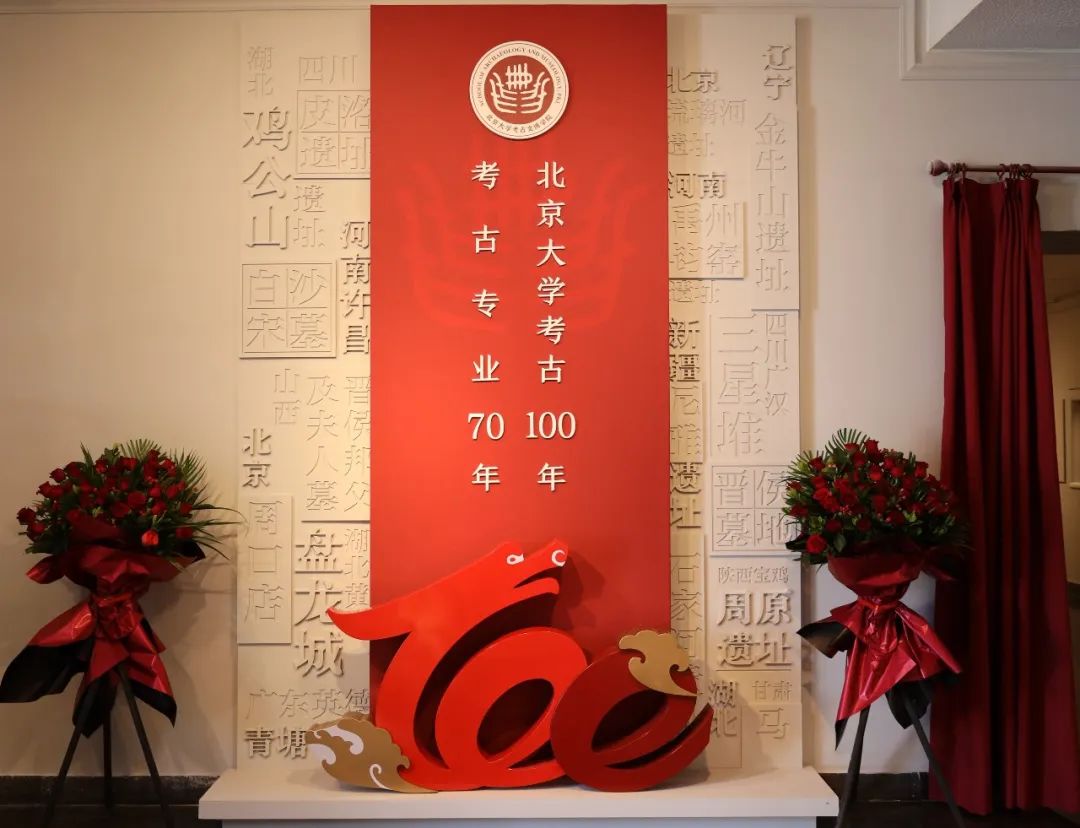
"100 years of archaeology at Peking University, 70 years of archaeology" special exhibition site
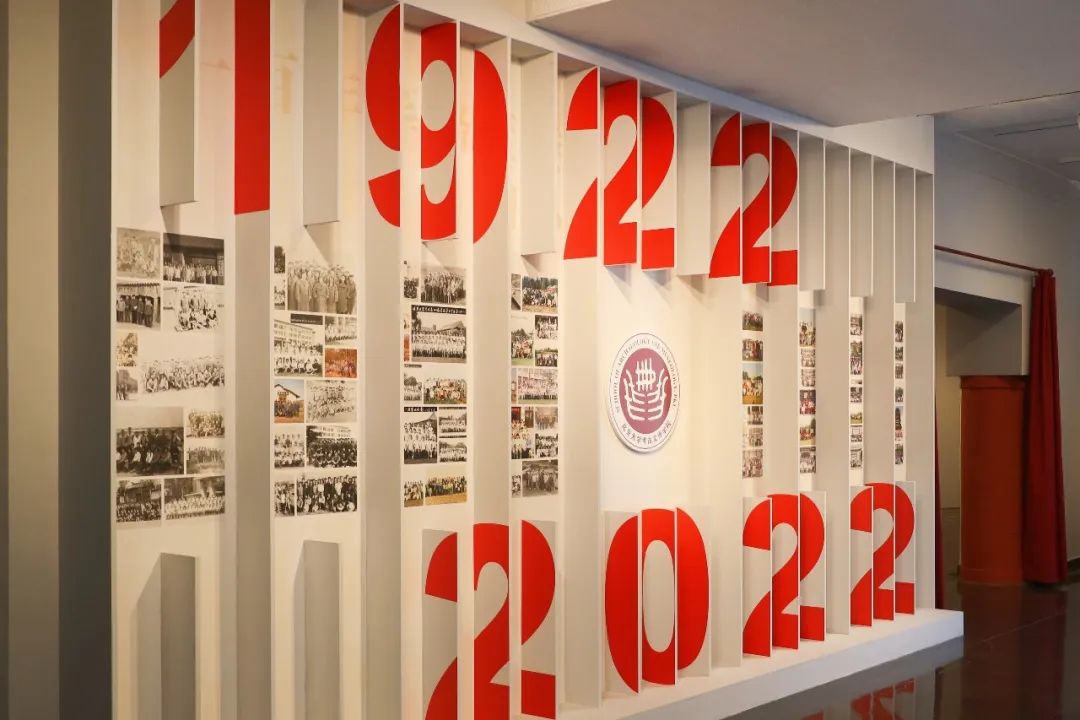
"100 years of archaeology at Peking University, 70 years of archaeology" special exhibition site
According to the relevant materials of the Sackler Museum of Archaeology and Art of Peking University, the exhibition starts from the preface hall and sublimates from the end hall. The main part divides the 100-year development history of Peking University archaeology into four units in chronological order. It is a memorabilia of the college, reviewing the history of Peking University's archaeology; the outer exhibition line shows the important archaeological participation of Peking University through archaeological excavation specimens, old archives, excavation reports, artifact cards, old photos and other more than 100 pieces of exhibits and graphic display boards. work, expounding the contribution of Peking University archaeology to the development of discipline theory and methods, and pay tribute to the senior scholars who have made outstanding contributions.The preface hall briefly outlines the history and current situation of Peking University's archaeology specialty, covering important nodes in the history of Peking University's archaeology specialty, the current institutional structure of Peking University's School of Archaeology and Museology, Peking University's independent field archaeological practice, hosting or participating in the "Top Ten New Archaeological Discoveries in China" over the years. ” and the list of “Hundred Years of Archaeological Discoveries”. The exhibits in this part are mainly the quintessence of the cultural relics of this exhibition.
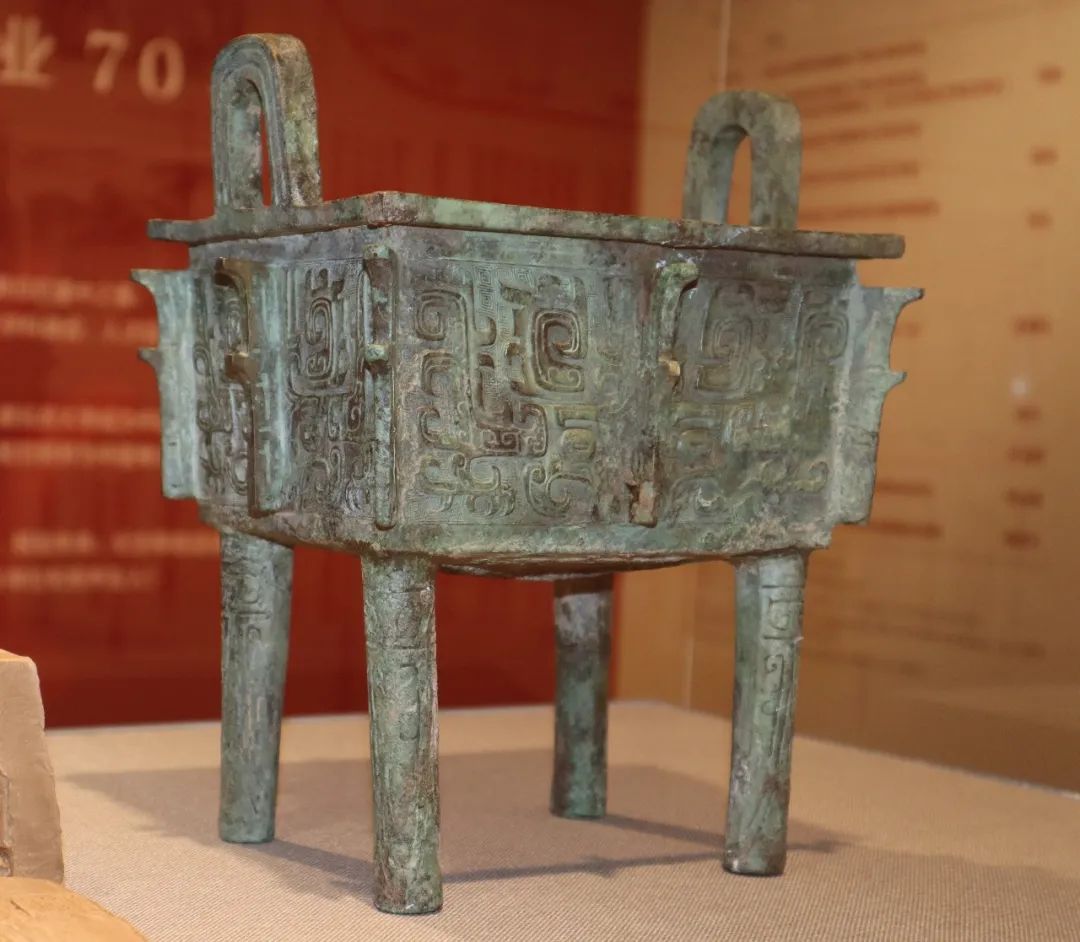
Unearthed from M114 of the Northern Zhao Jinhou Cemetery at the Tianma-Qucun Ruins in the early Western Zhou Dynasty of Shuyu Fangding
It is a bronze heavy object found during the field practice in the cemetery of Zhao Jinhou in northwestern Shanxi Province from 2000 to 2001 by Peking University archaeology. The ears are erect, the abdomen is straight, the bottom is flat, and the feet are four columns. The abdomen is decorated with a large animal face pattern with cloud and thunder patterns as the ground, the four corners and the middle of the abdomen have "F"-shaped ridges, and the column bases are decorated with cloud patterns and banana leaf patterns. The inner wall of the abdomen has an inscription of 48 characters in 8 lines. The author may be Tang Shuyu, the younger brother of King Cheng of Zhou. This utensil has witnessed the important historical sites of the Western Zhou Dynasty's enfeoffment in southern Jin.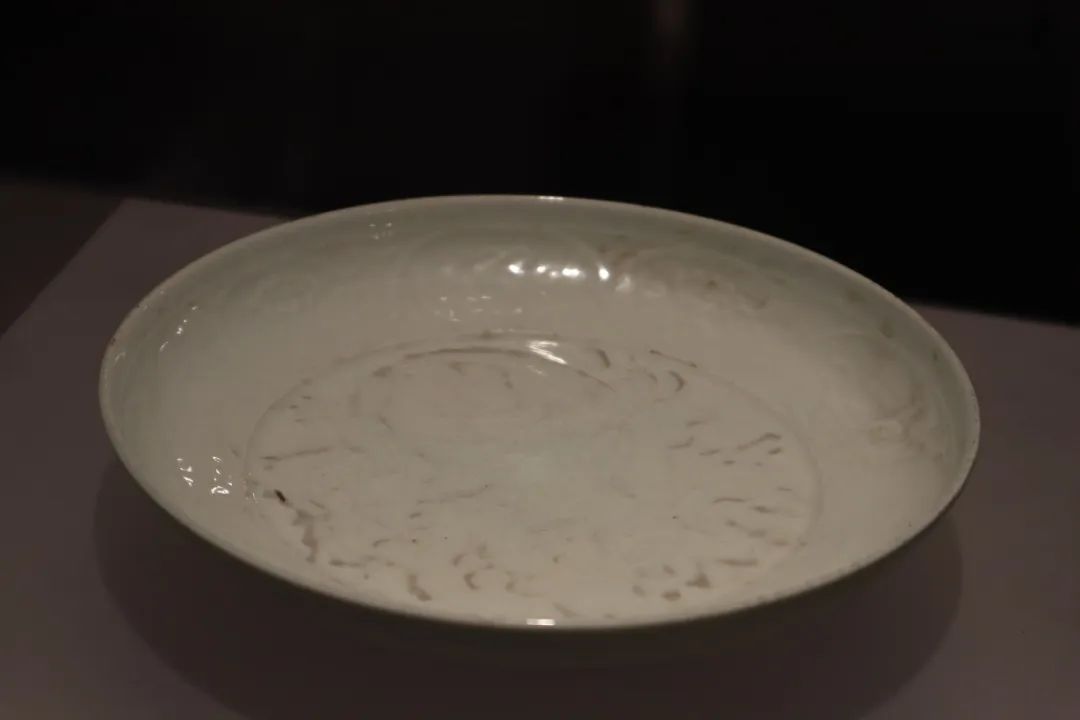
Egg white glaze print "Taixi" inscription plate late Yuan Dynasty
Round lips, open mouth, shallow belly, broad bottom, short ring feet. The egg-white glaze is smooth and smooth, with small pieces of glaze shrinking locally, and the glaze on the outer wall is blue-green. Flat sand bottom, fine texture, white and slightly gray. The outer wall is engraved with "eight big yards" pattern. Printed on the inside of the plate, the center of the plate is printed with the pattern of Dulong Playing Beads, the inner wall is printed with a Yang pattern on the inner wall, and the belly is printed with a deformed lotus flower. The eight treasures are supported on the top, and the symmetrical characters "Taixi" are printed between the patterns. , There are only three utensils of the same style in existence, which are extremely precious.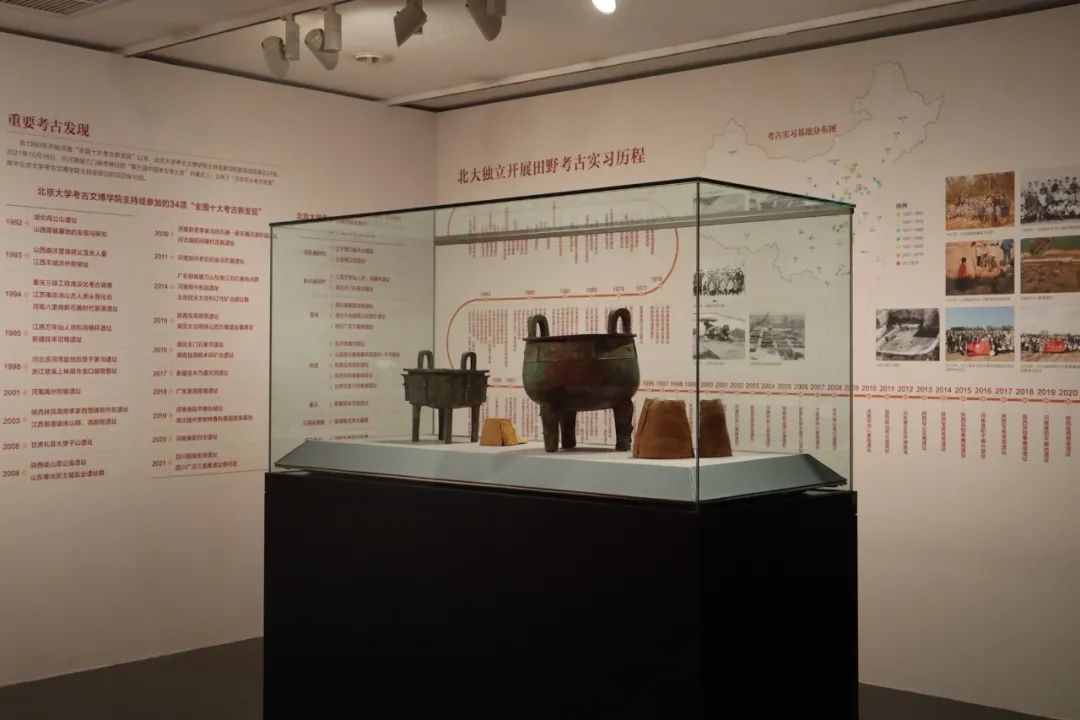
Exhibition hall scene
Early Exploration of Chinese ArchaeologyThe first unit reviews the early exploration of Chinese archaeology from 1922 to 1952. Against the background of the New Culture Movement, the impact of the skeptical trend of thought makes the traditional Chinese historiography system unstable. Many scholars try to learn from the archaeology from the west and reconstruct the ancient history system through the excavation and interpretation of underground materials. "In order to promote our country's culture and to revise the past," Peking University established an archaeology laboratory in the Institute of Chinese Studies in 1922, advocating "the use of scientific methods to investigate, preserve, and study the material relics of human beings in China in the past and relics”, and develop an archaeological plan and carry out fieldwork. Although many plans have not been fully realized due to the constraints of the times, Peking University Archaeology has been operating in adversity and developing in difficulties, and has made preliminary accumulation in academic research, curriculum construction, student training, and the construction of specimen rooms and museums.

Fragment of Zhengshi Shijing, Cao Wei Zhengshi 2nd year (241)
In 1924, it was found in Luoyang by Ma Heng, a professor at the Archaeological Research Office of Sinology. In 1922, more than 100 pieces of stone scriptures of various sizes were unearthed in Zhugedang Village in the southeast of Luoyang City (the former site of the Taixue Site of Luoyang City in the Han and Wei Dynasties). These stone scriptures are called Zhengshi Shijing (also known as the Three-Tibetan Stone Classics), which were inscribed in the second year of Zhengshi (241) of Cao Wei. "Zuo Zhuan" and other classics. Shijing was originally located on the west side of the Taixue Lecture Hall in the southern suburb of Luoyang, the capital of Cao Wei. Since then, the dynasties have changed, the stone scriptures have been destroyed, and the original monument no longer exists. Since the Song Dynasty, some remnants have been unearthed from time to time. There are more than 20 characters in this fragment, which is part of the content of the "Spring and Autumn" from the 28th to the 31st year of Duke Xi.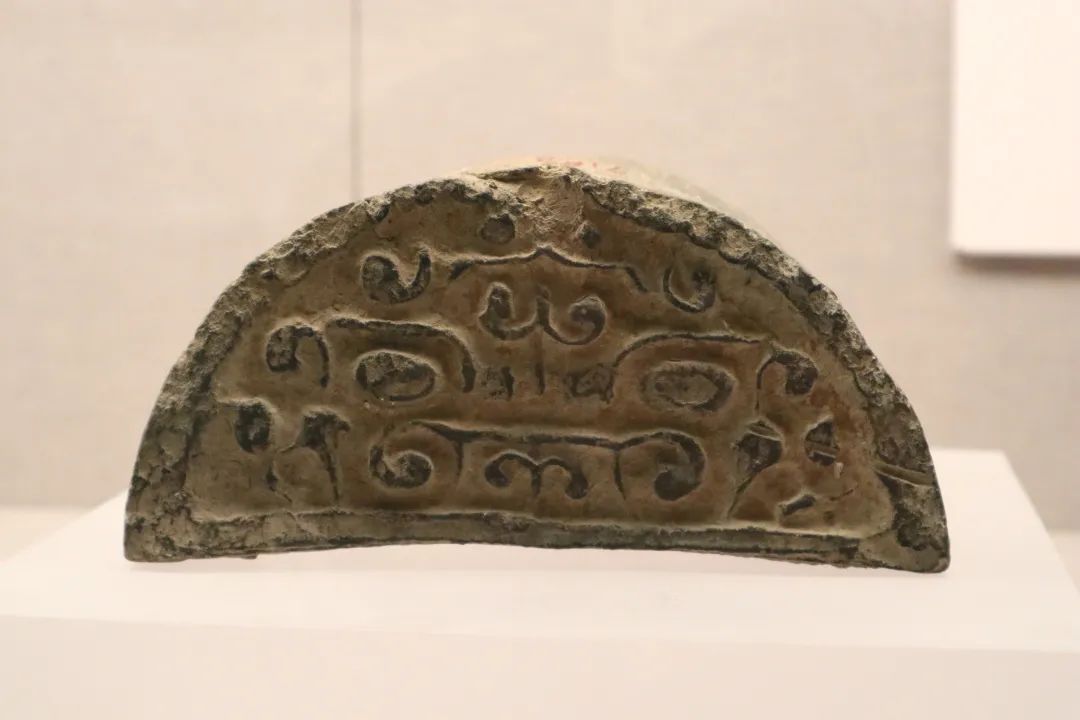
The taotie tile was unearthed from the Yanxiadu site in Yi County, Hebei Province during the Warring States Period
In 1930, the Archaeological Society of Peking University, the Peking Research Institute and the Antiquities Preservation Committee formed the Yanxiadu Archaeological Group, with Ma Heng as the head of the group, to excavate the Laomutai site. The excavation of the Yanxiadu site, the excavation of the Xiyin village site, the excavation of the Yinxu site and the excavation of the Doujitai site are the four earliest and most important works in the history of Chinese archaeology. It determines the future direction of Chinese archaeology.The gluttonous tiles in Yanxia are building components. Muddy grey pottery, semicircular in shape. The body of the barrel is partially broken. Firing slightly deformed. Decorated with taotie pattern. The taotie pattern was the main pattern of bronze wares in the Shang and Zhou dynasties, and was on the verge of extinction in the Spring and Autumn Period and the Warring States Period. This pattern is still used in the tiles of the State of Yan, which seems to indicate that the State of Yan has retained more traditional patterns.
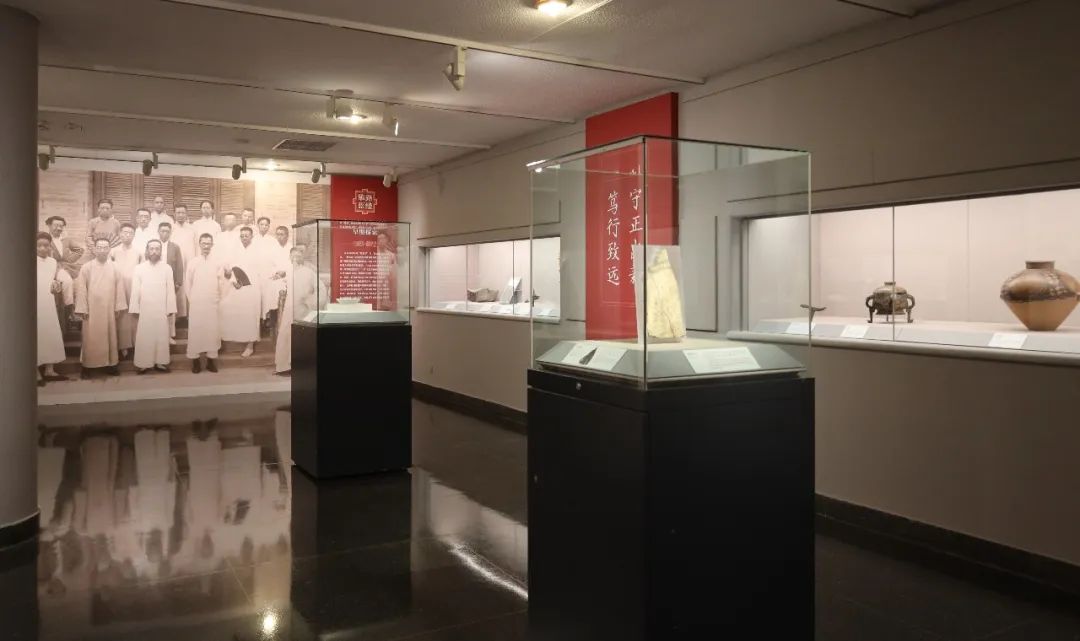
Exhibition hall scene
The history of the establishment of China's archaeological discipline systemThe second unit describes the creation process of China's archaeological discipline system from 1952 to 1983. In 1952, with the support of the Ministry of Culture, the Chinese Academy of Sciences and the Ministry of Education, Peking University established the major of archaeology, leading the country's universities. The fundamental task of the major is to build the scientific research and teaching system of archaeology in colleges and universities, and to cultivate professional talents. Because there is no precedent to learn from, the construction process is arduous and tortuous, which reflects the wisdom and perseverance of the archaeologists of Peking University. At the beginning of the professional establishment, four archaeological personnel training courses were jointly held with the Social and Cultural Affairs Administration of the Ministry of Culture and the Institute of Archaeology of the Chinese Academy of Sciences, which trained a large number of archaeological and cultural relic workers for the country. Since then, Peking University archaeology has gradually formed a development model based on independent field archaeology teaching practice, improving teaching level, and producing scientific research results in the arduous exploration, and has achieved many remarkable achievements.
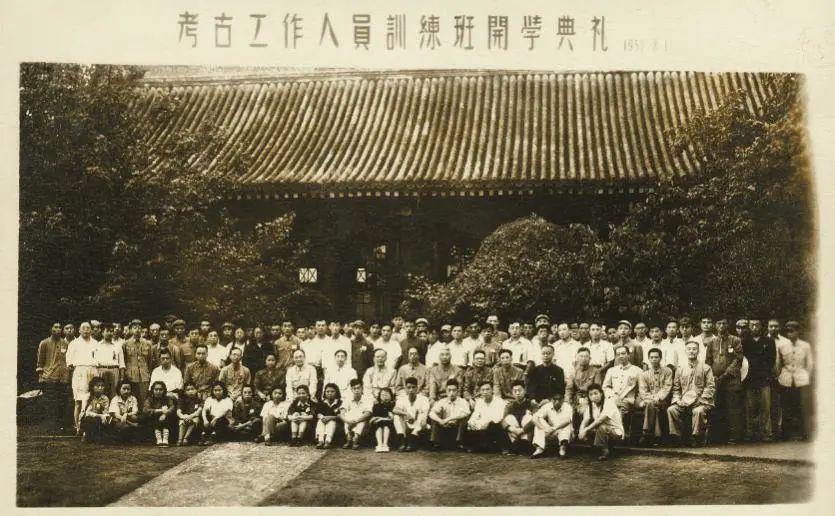
In August 1952, the group photo of the opening ceremony of the first training course reflected the initial establishment of the archaeology major of Peking University. From right in the row: Guo Baojun, Yin Da, Han Shouxuan, Qi Gong, Zhang Zhenglong, Xia Nai, Zheng Tianting, Pei Wenzhong, Zheng Zhenduo, Guo Moruo, Shen Yanbing, Ding Xilin, Tang Lan.
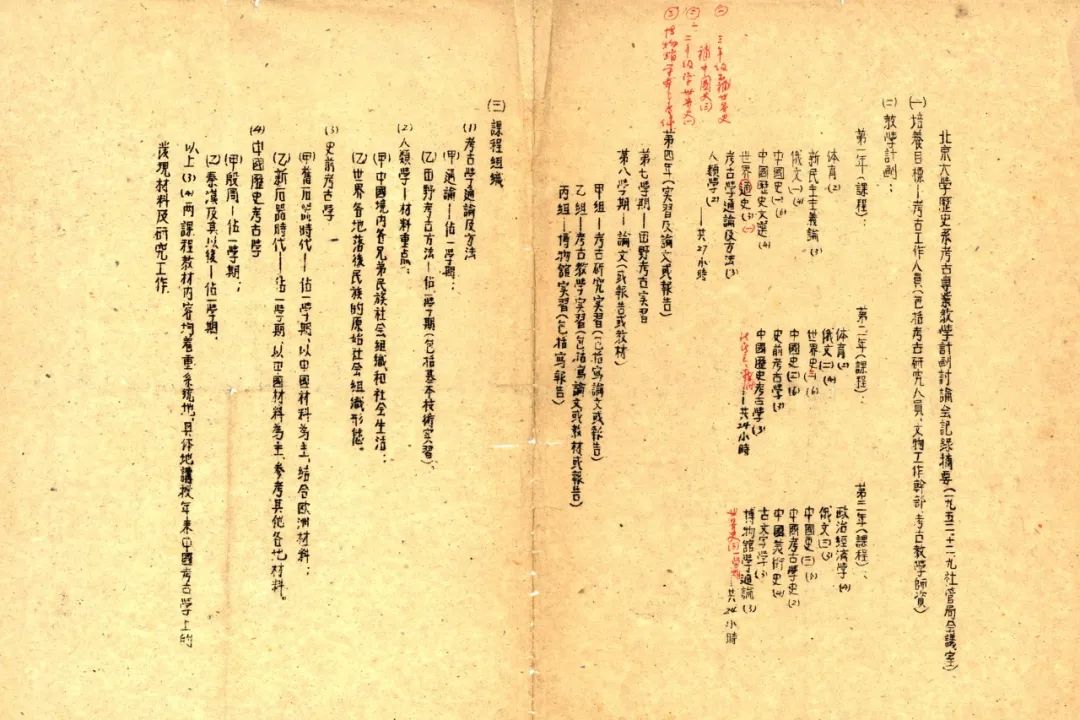
Summary of the discussion meeting on the teaching plan of the archaeology major of the Department of History, Peking University December 9, 1952 The meeting laid the foundation for the teaching plan of the archaeology major of Peking University, and Mr. Su Bingqi also came to attend. In the same month, the archaeology major of Peking University was officially established, and Mr. Su Bingqi was appointed as the director of the archaeology teaching and research section.
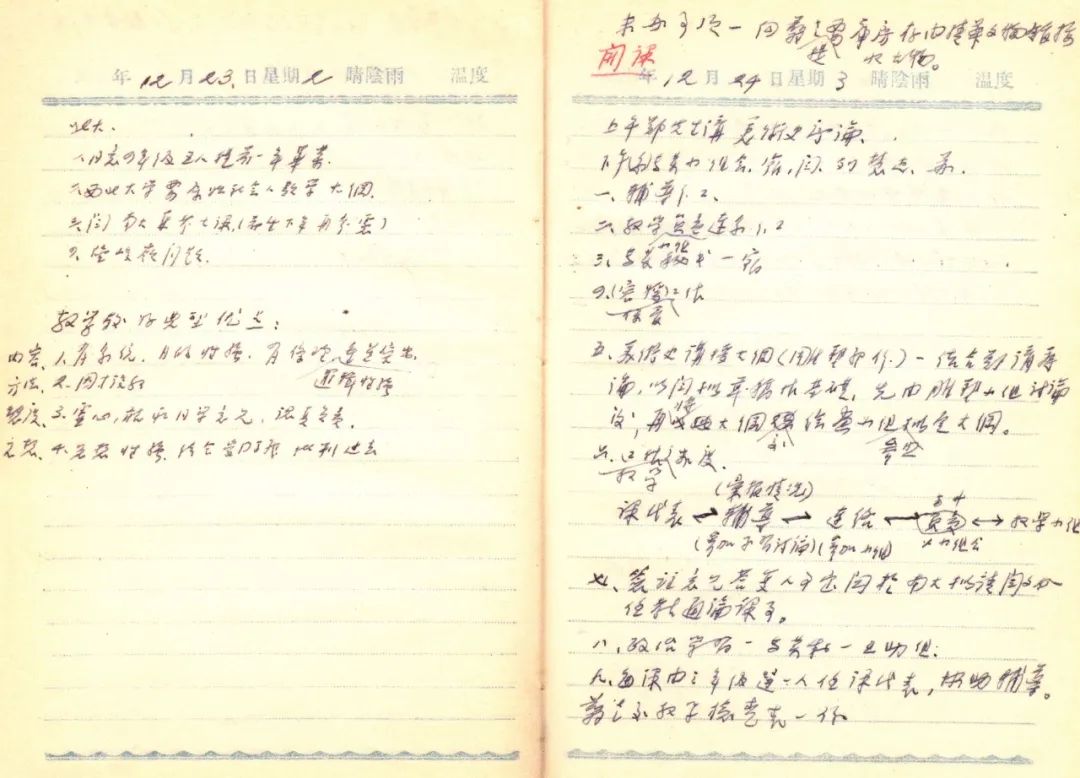
Mr. Su Bingqi's Diary On December 24, 1952, Zheng Zhenduo taught the first course of archaeology, "History of Art", in the morning, and held a group meeting for archaeology in the afternoon to discuss teaching work.

Unearthed from M43 in Baijia Village, Handan, Hebei Province in the early Warring States Period
In 1957, the archaeology of Peking University obtained it from the field practice in Handan. This practice is the first independent practice arranged by Peking University Archaeology under the guidance of teachers of this major in accordance with the teaching plan. Led by Mr. Su Bai, Zou Heng, etc. The "Peking University model" of field archaeology teaching in China is of great significance to the construction of the archaeology major teaching model in the future, and has been widely studied and adopted by the archaeology disciplines of domestic universities.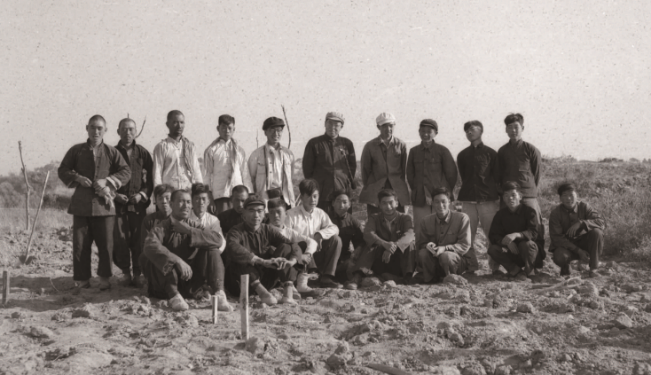
In 1957, the construction photo of the Wu'an Guitai excavation area in Handan (the fifth from the right in the back row is Mr. Su Bai, and the third from the right is Mr. Zou Heng)
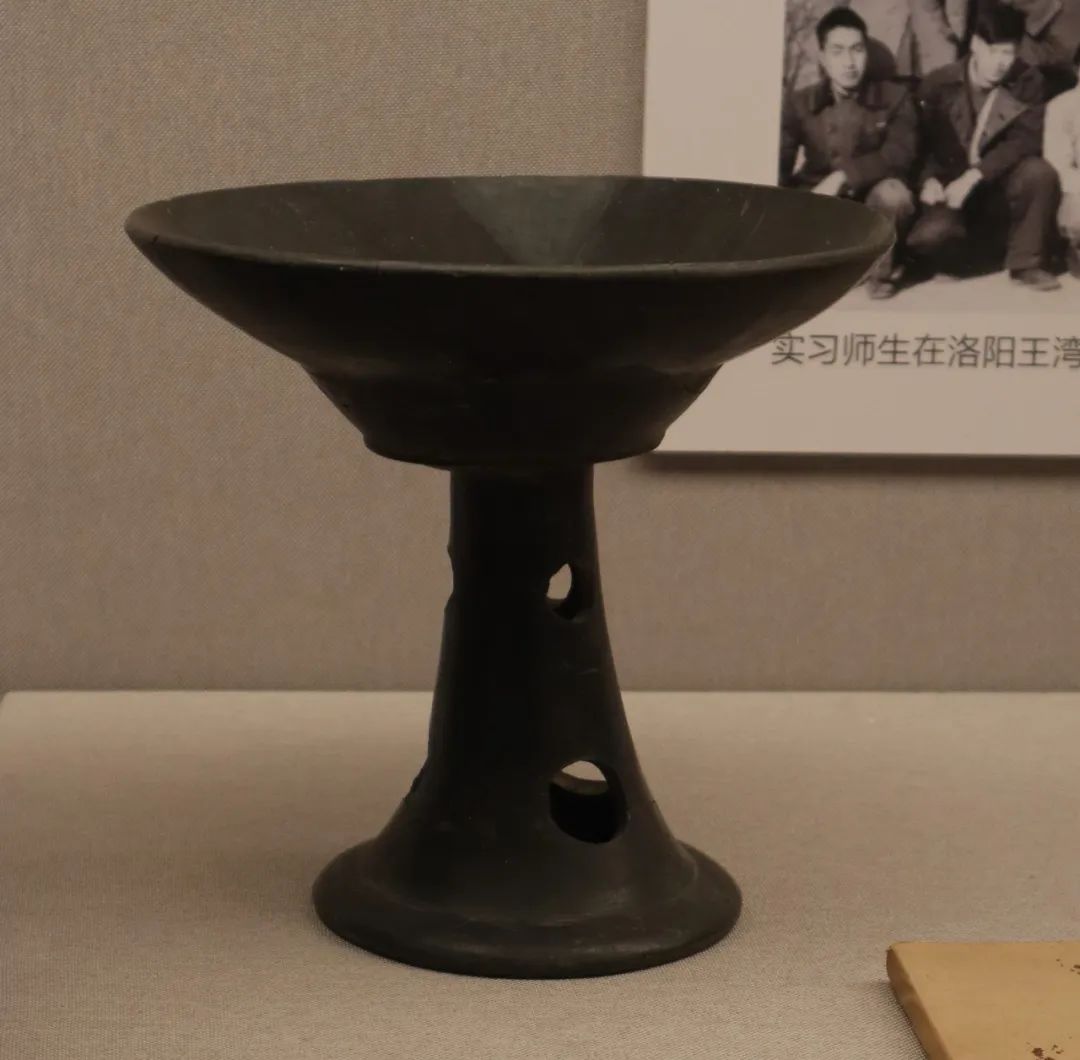
Taodou Late Neolithic Unearthed from Ash Pit No. 487 at the Wangwan Site in Luoyang, Henan Province in the Sackler Archaeology and Art Museum of Peking University
In 1960, it was obtained from the field practice of Peking University archaeology at the Wangwan site. Muddy black-skinned grey-bodied pottery. handmade. Slow wheel trimming, open folded belly, flared ring foot. The surface is polished and the bean handle is decorated with circular perforations.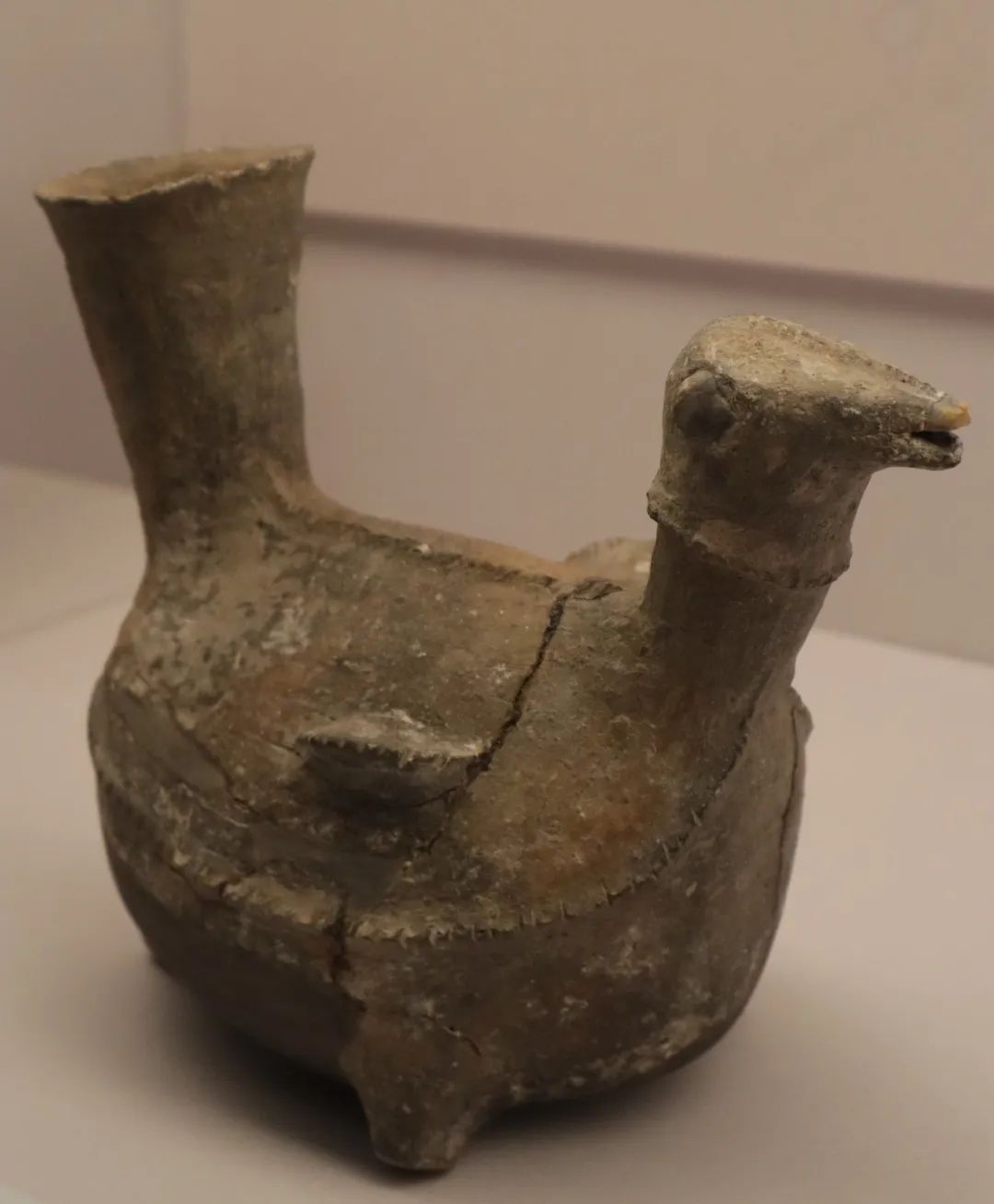
Unearthed from the Beizhuang Site of Changdao, Shandong Province in the Late Neolithic Age
In 1984, it was obtained from the field practice of Peking University archaeology at the Beizhuang site. Sand and talc taupe pottery, handmade. The vessel is in the shape of a bird, the head and the tail are separated from the two ends of the belly, the head is a bird's beak-like flow, and the tail is upturned, with a slightly trumpet-shaped mouth. The belly of the vessel is oval, with an arc-shaped short wing attached to both sides of the front, and a conical three-legged lower part. All utensils are decorated with zigzag ribbons. The mounds on the neck, belly and ridge are all carved on additional mud strips. The rear of the bottom and the hind foot are missing.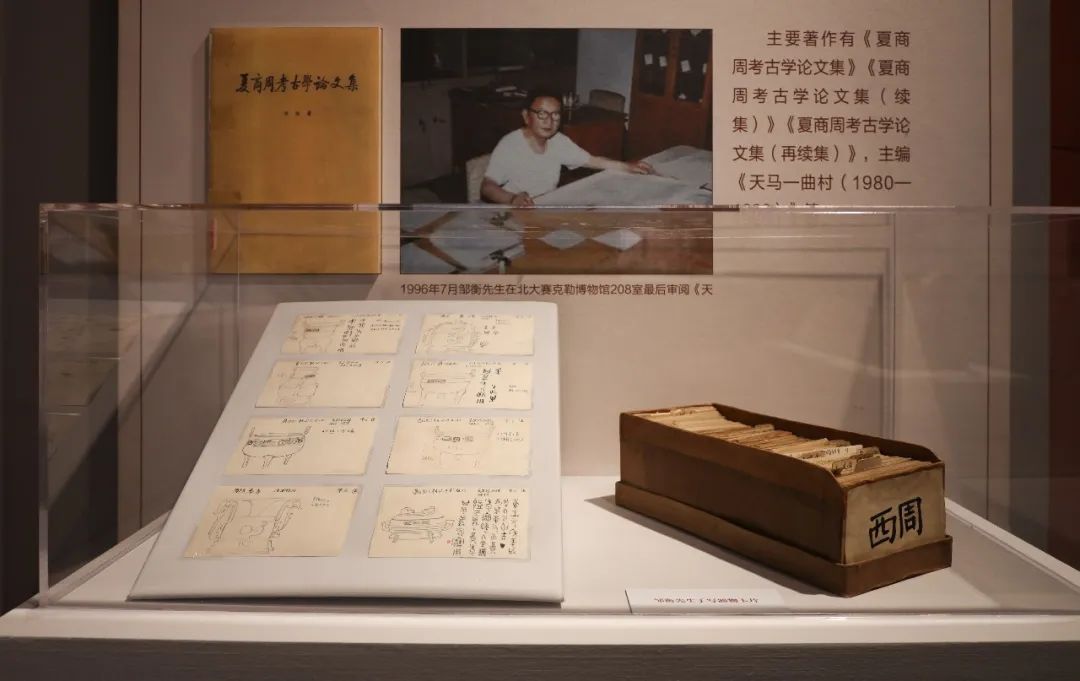
Artifact Cards Made by Mr. Zou Heng Mr. Zou Heng is known for his strict order and discipline in his studies, which can be reflected in the production and induction of artifact cards.
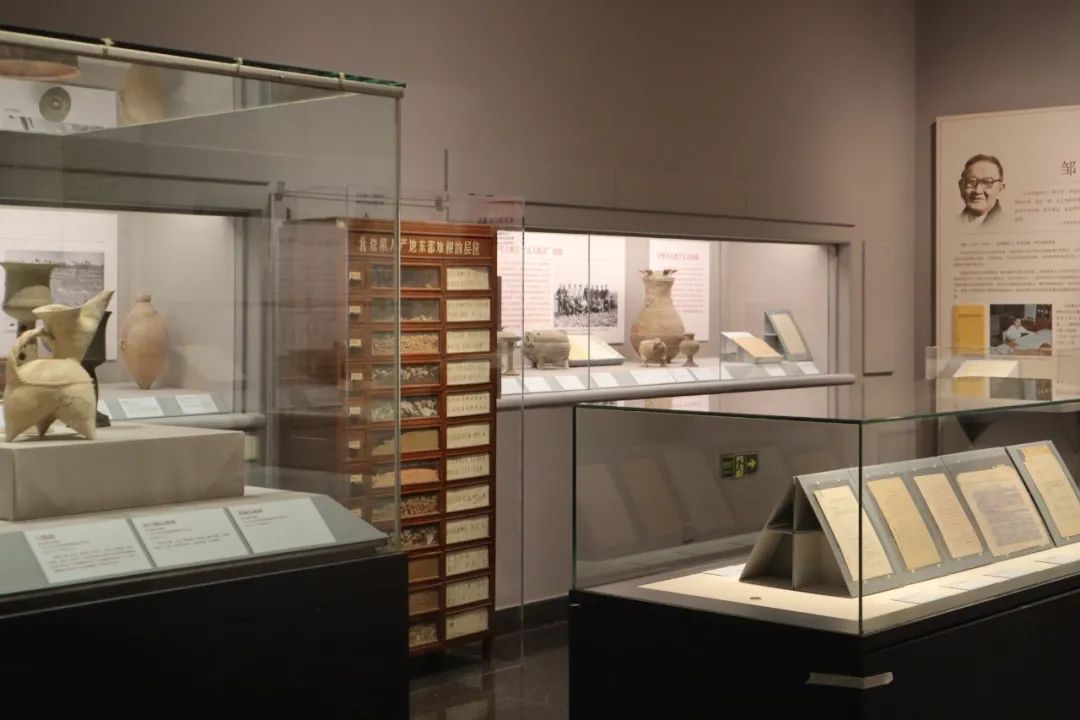
Exhibition hall scene
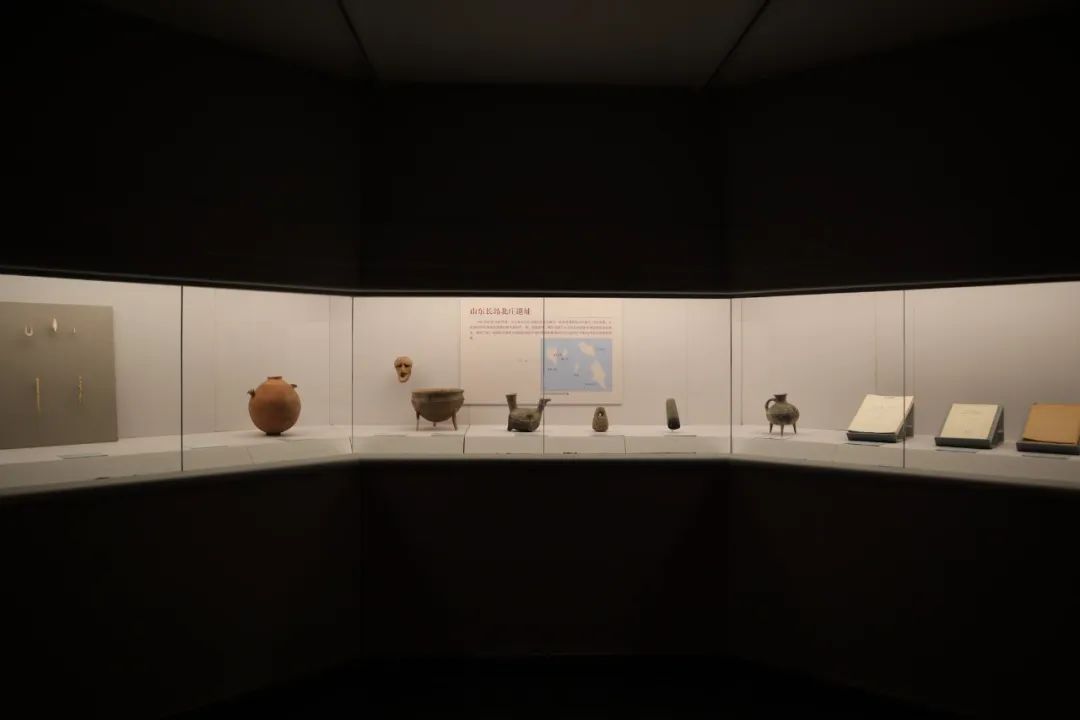
Exhibition hall scene
The Gradual Improvement of China's Archaeological Discipline SystemThe third unit shows the gradual improvement of China's archaeological discipline system from 1983 to 1998. After hard work, the archaeology major of Peking University has a relatively complete teaching and research system. Based on this, the Department of Archaeology was established independently on July 11, 1983, and Peking University Archaeology set an important milestone and opened a new chapter. During this period, the disciplines of the Department of Archaeology of Peking University have been continuously enriched, and new research fields such as religious archaeology, ceramic archaeology, physical anthropology, animal archaeology, environmental archaeology, experimental archaeology, agricultural archaeology, metallurgical archaeology, and quantitative archaeology have been opened up. A large number of cutting-edge topics, such as the origin of its culture, the formation and early development of Chinese civilization, and teaching and research have repeatedly achieved good results.
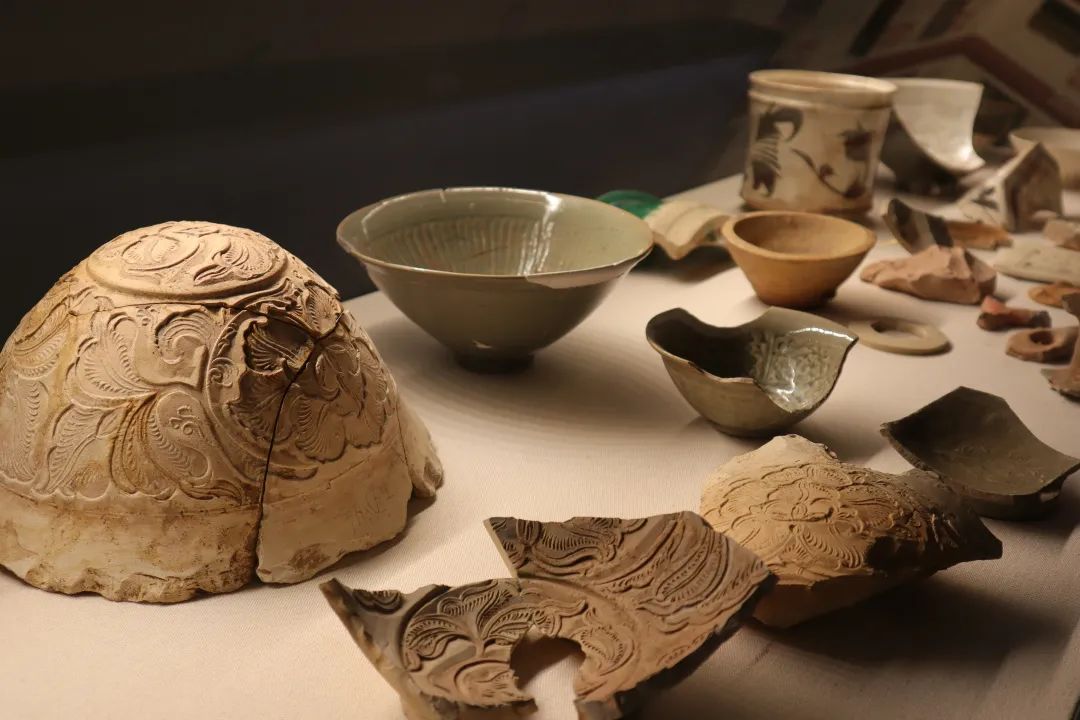
Some of the kiln furniture and porcelain specimens excavated by the college are from Yue kiln, Longquan kiln, Linru kiln, Hongzhou kiln, and Cizhou kiln.
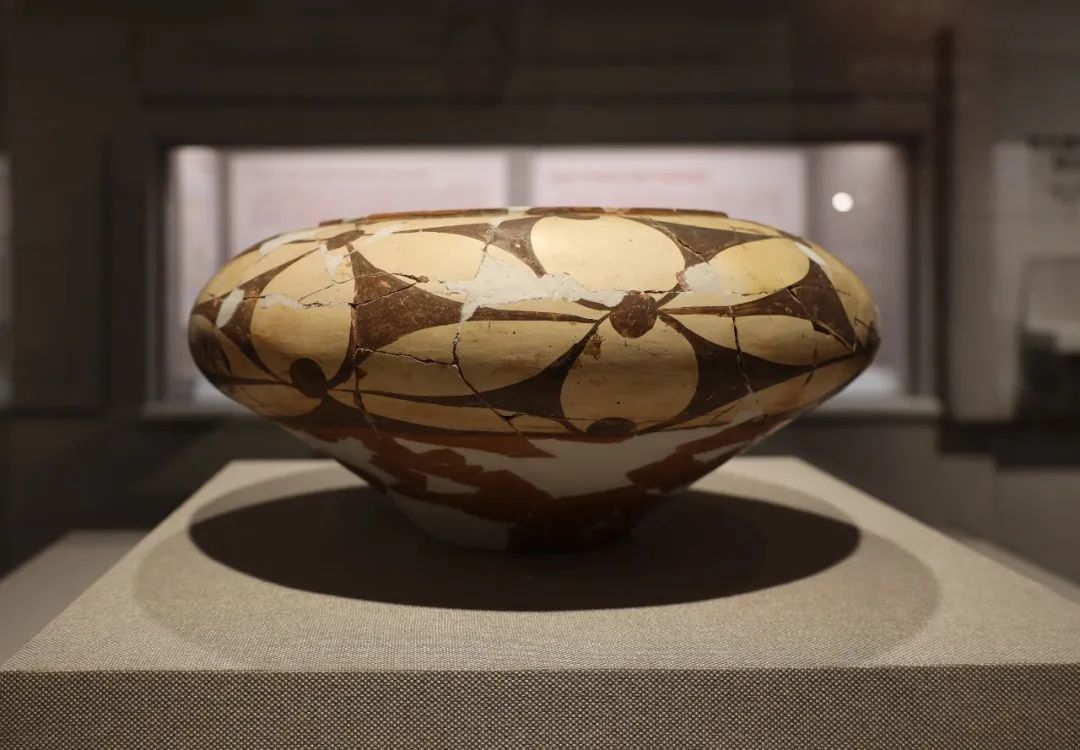
Painted pottery pots with flower patterns were unearthed from the Baligang site in Baizhuang Village, Dengzhou, Henan Province in 1996 in the late Neolithic Age
Reservoir, clay pottery, handmade. The lips are rounded, the mouth is closed, the shoulders are bulged to the middle of the abdomen and contracted inward, with a small flat bottom. Red pottery body, dark brown bottom. The creamy white pottery coat is painted on the shoulders and abdomen, and the lips, shoulders and abdomen are painted with brown dots and triangular patterns. The dots represent flower buds, and the exposed milky white pottery clothes look like petals. The pattern expresses the continuous petal pattern of the Rosaceae. The shape and pattern of the utensil are typical of the Yangshao Culture Temple Digou style.From 1990 to 2011, the college conducted 11 excavations at the Baligang site in Dengzhou for 22 years. The site is the first fully revealed settlement in the middle of the Yangshao culture, which plays an important role in understanding the settlement form and social structure of the upper reaches of the Han River in the Yangshao period. The excavation results were rated as "Top Ten New Archaeological Discoveries in China" in 1994.
According to reports, one of the highlights of this unit is the visualization of major field achievements of Peking University archaeology over the years. This work was completed by the School of Archaeology and Museology of Peking University and the Visualization and Visual Analysis Laboratory/National Engineering Laboratory of Big Data Analysis and Application Visual Analysis Center of Peking University School of Intelligence. Top Ten New Archaeological Discoveries in China" and "Hundred Years of Archaeological Discoveries".
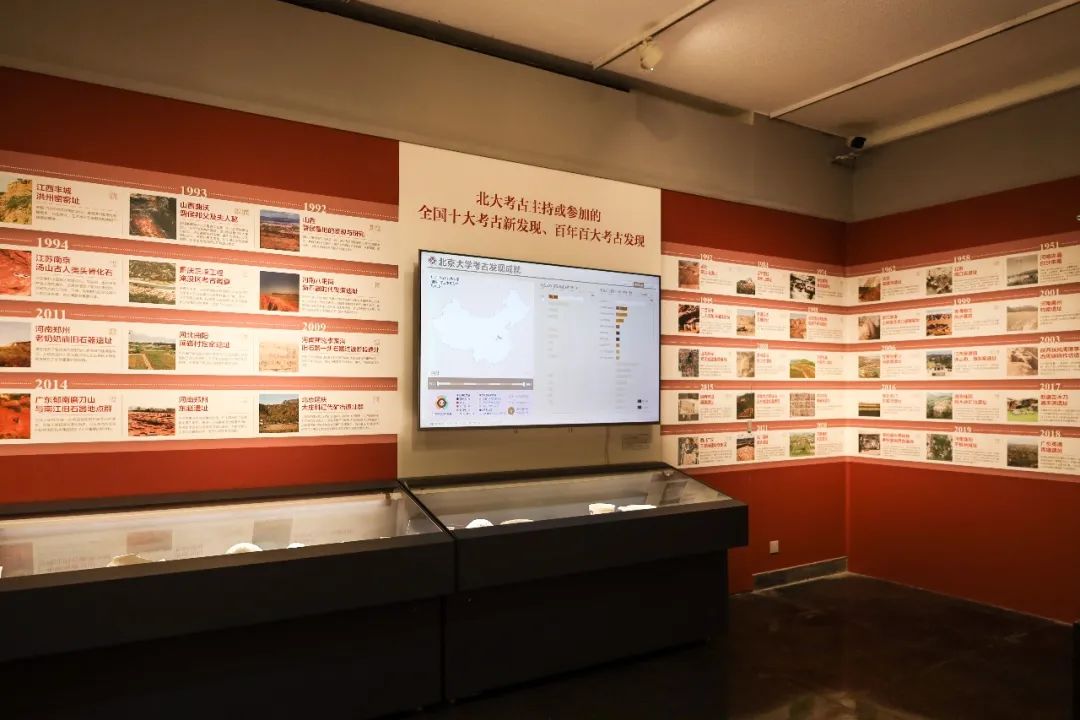
Interactive area for stone tools and plant specimens
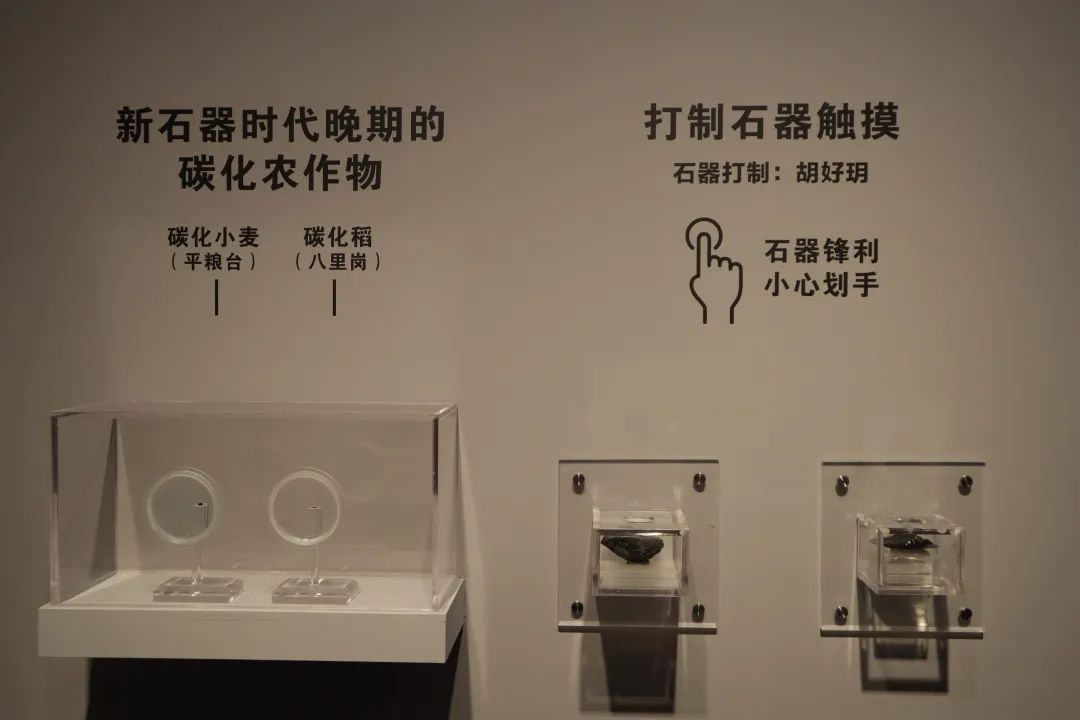
Interactive area for stone tools and plant specimens
The expansion trend of the archaeological discipline system since 1998The fourth unit explores the expansion trend of the archaeological discipline system from 1998 to the present. In 1998, the Department of Archaeology was changed to the Academy of Archaeology and Cultural Museums, and Peking University and the State Administration of Cultural Heritage jointly established the School of Chinese Cultural Relics Museum, with Mr. Li Boqian as the dean. On May 4, 2002, it was renamed the School of Archaeology and Museology of Peking University. Under the overall planning of the successive deans of Gao Chongwen, Zhao Hui, Hang Kan, Sun Qingwei, Lei Xingshan and Shen Ruiwen, the discipline construction system was further improved and the discipline development direction was condensed. , forming the discipline layout and characteristics of Peking University archaeology today, and expanding the connotation of China's archaeology discipline system.
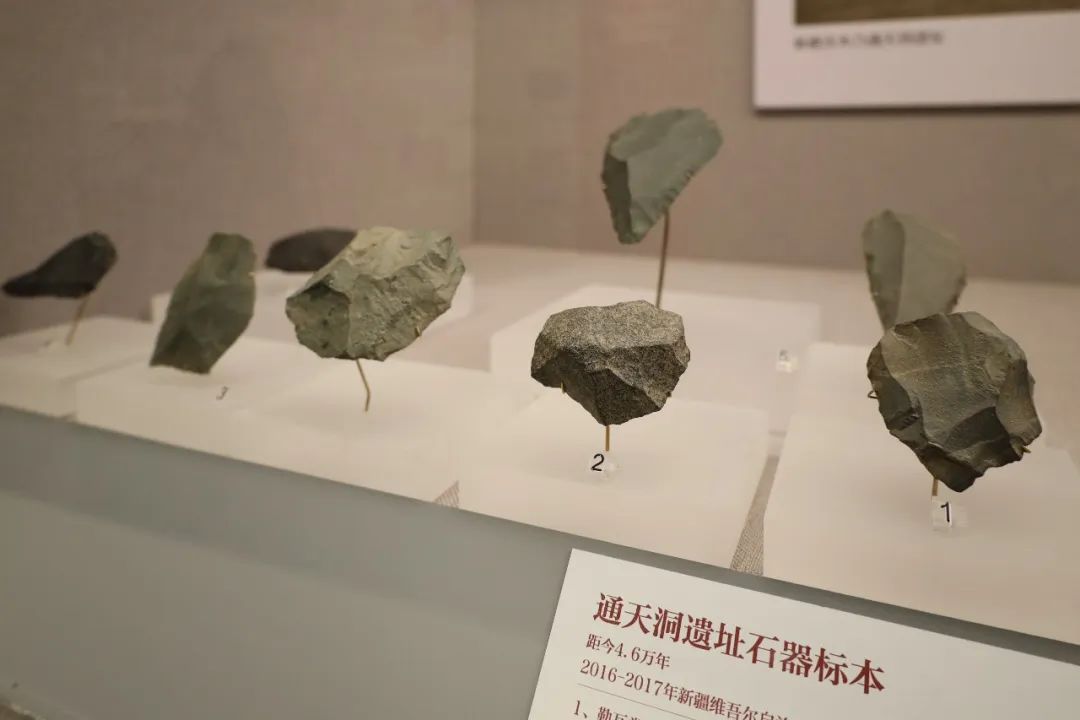
Stone tool specimens from Tongtiandong site 46,000 years ago unearthed from Tongtiandong site in Jimunai, Xinjiang Uygur Autonomous Region
There are Levallois stone cores, disc-shaped stone cores, Levallowa stone flakes, Levallowa pointed devices, Most pointed devices, and converging blade scrapers. From 2016 to 2020, the School of Archaeology and Museology of Peking University and the Xinjiang Institute of Cultural Relics and Archaeology have conducted five archaeological excavations at the Tongtian Cave site in Jimunai County, with a total excavation area of 241 square meters, including two excavation areas: caves and wilderness. More than 3,000 numbered specimens and animal fossils have been unearthed from the Middle Paleolithic to the Late Paleolithic, more than 45,000 years ago.
Unearthed in the north of Zhujia Lane, Fengming Town, Qishan County, Shaanxi Province at the end of the Shang Dynasty and the beginning of the Zhou Dynasty. 2021.0021; C10④:1
The work of Peking University archaeology at the Zhougong Temple site confirmed the location of Zhougong's fiefs, and provided rare and precious materials for the study of the history of the Zhou people and the social structure of the Zhou people from the pre-Zhou to the early Western Zhou Dynasty.This unit has a special area to display the joint experimental archaeology project of the college and the Luoyang Institute of Cultural Relics and Archaeology - Yichuan Jar Laboratory Archaeology. Teachers specializing in cultural relics protection will use laboratory archaeological methods to clean up the combination of cylinders and pottery pots unearthed from the Tumen site in Yichuan, Henan Province, and carry out analysis of organic cultural relics by comprehensive microscopic morphology, chemical analysis and other methods. Work.

Laboratory archaeology display area
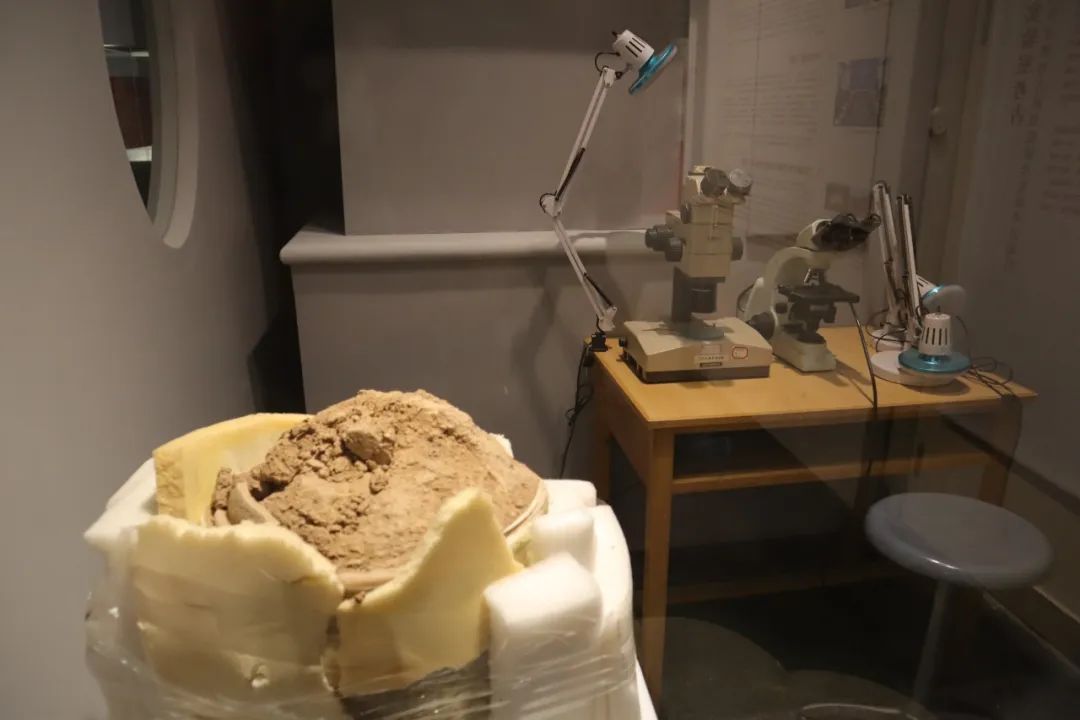
Laboratory archaeology display area
Among Chinese institutions of higher learning, Peking University was the first to set up a teaching and research institution for archaeology. Since the first five students graduated in 1953, Peking University archaeology has spread its branches and become the cradle of Chinese archaeology and Chinese archaeologists.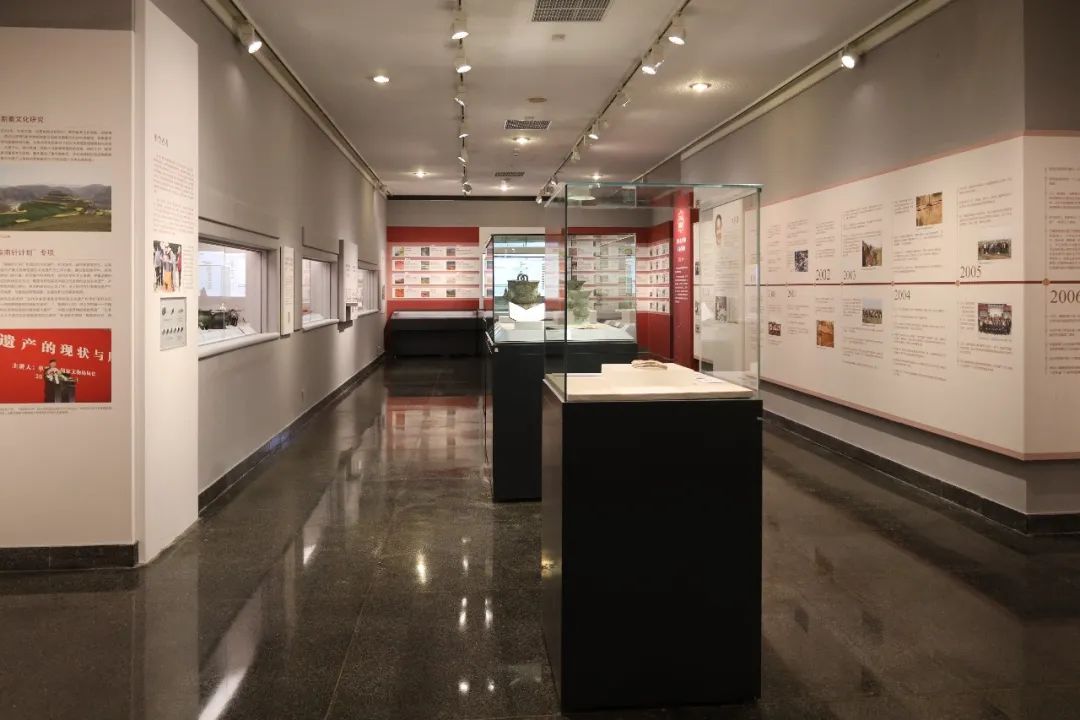
Exhibition hall scene

Exhibition hall scene

Peking University archaeology textbooks over the years
Exhibition Name: "100 Years of Archaeology at Peking University, 70 Years of Archaeology Major" Special ExhibitionExhibition time: May 3, 2022 - May 10, 2023
Venue: Sackler Museum of Archaeology and Art, Peking University
(This article is based on the relevant materials of the Sackler Museum of Archaeology and Art, Peking University.)